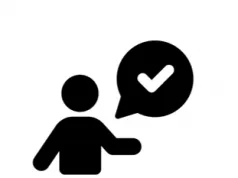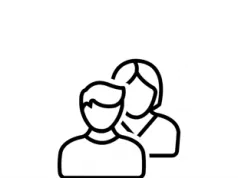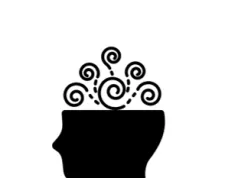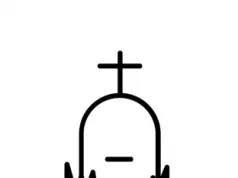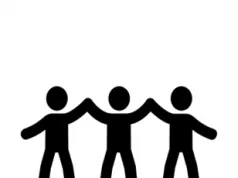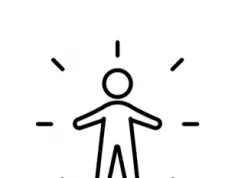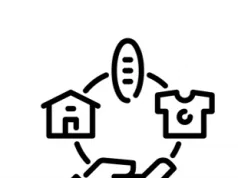Electroconvulsive Therapy (ECT) sessions can be a frightening prospect, but in reality, they are often straightforward occurrences.
A person may voluntarily attend ECT sessions, or sometimes they are carried out when an individual is an inpatient at a Hospital. An inpatient will typically stay overnight, while an outpatient is someone who doesn’t stay overight.
Over the years, improvements in preparation and aftercare have been made, and there is now a set process that takes place to ensure that the process of ECT is as smooth as possible – as we cover in this article.
What is Electroconvulsive Therapy
Electroconvulsive Therapy (ECT): Electroconvulsive Therapy (commonly referred to as shock treatment) is a treatment that sees an electric current sent through the brain of an individual. The aim is to trigger an epileptic seizure, with the ultimate objective to relieve symptoms of a mental health problem. The human body is fully restrained during the procedure, which also involves a general anaesthetic. Electroconvulsive therapy is normally a last resort. Despite this, ECT actually has an impressive efficacy rate, with many people finding it helps immeasurably.
Preparation
Ahead of their treatment, a person should be given comprehensive advice and information on what ECT involves, the potential risks, and have the chance to ask any questions they may have.
A health check will be made beforehand to determine whether or not a person is suitable for ECT. Some cosmetic procedures e.g. tooth veneers stop a person from being eligible for ECT.
Instructions on food and drink to avoid prior to appointments, as well as clothing requirements, will be discussed, before a person is provided with an appointment.
Attending an appointment
Once a person is ready, they will go to the room where ECT will be carried out. Shoes and jewellery are removed, before an anaesthetic is administered.
This will make the patient comfortable, before they lose consciousness. A muscle relaxant is then normally injected, which stops the body from making sudden or violent movements during ECT.
Next, two electrodes are placed on the temples, normally one either side. A mouthguard is placed in the mouth to protect the tongue from trauma.
Then, once everything is ready, the ECT machine will send high-voltage electrical pulses through the brain over a short period of time. A seizure is triggered – with this lasting less than a minute usually.
Simply put, that is all there is to ECT. The mouth guard and any equipment are then removed, and the patient will be given oxygen while the muscle relaxant’s effects wear off.
After the appointment
Once they regain consciousness, the patient is usually groggy, confused and disoriented. The patient should then be led to an area where they can relax, and given time and space to recover.
As an outpatient, the patient is unable to leave the hospital alone following ECT. They should have someone accompany them out of the hospital, and ensure that they have a trusted family member or friend near them for the following 24 hours.
They should also avoid drinking alcohol, driving, or signing any legal document. For inpatients, the same rules will follow, but these aftercare measures will be dealt with by staff members.
ECT is normally carried out 2-3 times over a period of a few weeks. 12 treatments are normally the maximum amount. The progress of patient will be monitored after each session, which helps to determine when treatment is no longer needed. Some people only require 3-6 sessions.
Summary
So while ECT may seem daunting, the process is very simple, and is a fast procedure. By being unconscious, the person will not feel any pain. The media depiction of a person being held down while screaming and shouting is certainly an exaggeration.
Once the treatment is complete, the patient should hopefully see an improvement in their symptoms, and see their overall mental well-being improve.
See Also
- Therapy Home
- Everything You Need To Know About Talking Therapy
- FAQ’s About Talking Therapy
- Electroconvulsive Therapy: Everything You Need to Know
- The Advantages and Disadvantages of Electroconvulsive Therapy
- 8 Things You Should Know About Electroconvulsive Therapy
- Peggy Salters: A Victim of Electroconvulsive Therapy
- Why is Electroconvulsive Therapy so Controversial?
- The Situations Where A Person Can’t Consent to Electroconvulsive Therapy
- The Short and Long Term Side Effects of Electroconvulsive Therapy
- How Do Electroconvulsive Therapy Sessions Work?
- Deciding Whether Or Not To Have Electroconvulsive Therapy
- How Do Repetitive Transcranial Magnetic Stimulation (rTMS) and Electroconvulsive Therapy (ECT) Compare?
Disclaimer
This website should be used purely for informational purposes, and does not intend to, nor should it ever, be used as a replacement for professional medical advice.
We strive to keep all of our pages updated, and ensure that our website is full of factual and in-depth information. However, we encourage you to browse this website with care.
As a reminder, this website and all content within it cannot and should not replace the advice of a trained medical professional. You can read our full disclaimer at this link.
Helplines
If you are struggling with your mental health, help is available. With the right support and treatment, you can make a recovery. For information on helplines, or if you are in a state of crisis, please visit our crisis page by clicking on the relevant link for your geographical location (United Kingdom), (United States), (International). You can also see how to get mental health treatment and the process involved by clicking this link.


